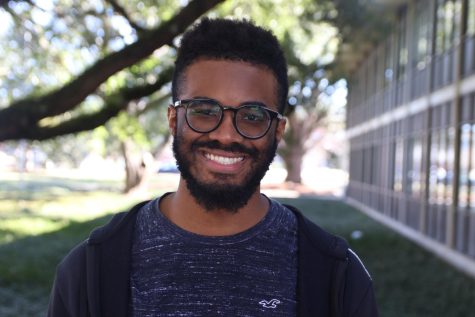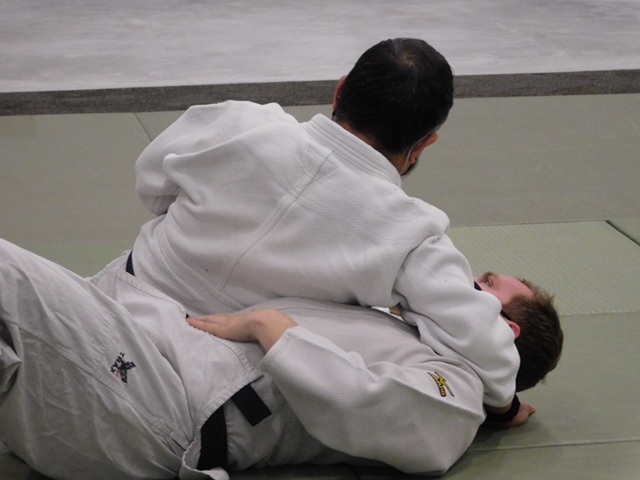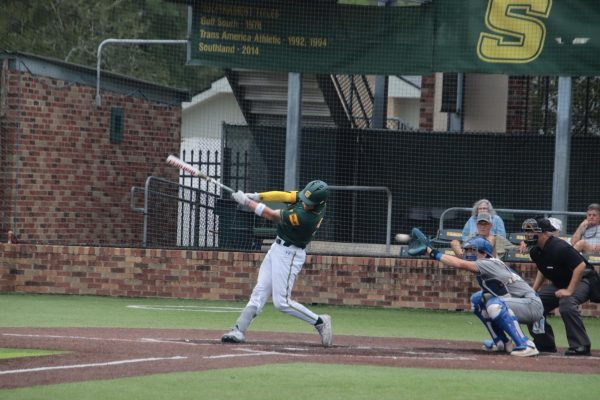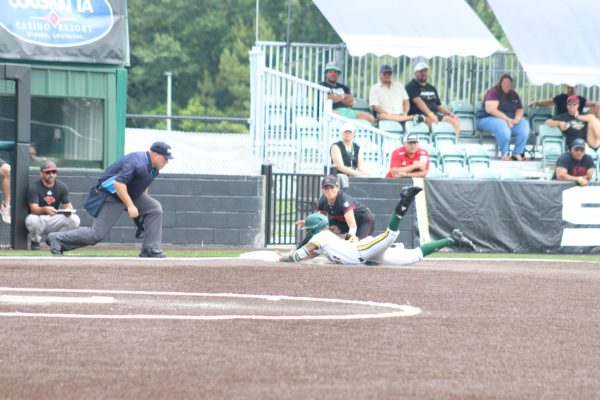Judo class hits the mat at Southeastern
Dr. Yoshida and Leighton Webre giving a takedown demonstration during class. The Judo class is located in the Kinesiology and Health Studies building in room 150.
Judo is a Japanese martial art and sport that primarily focuses on throws and grappling. This martial art is taught all across the United States, and even at Southeastern.
Introduction to Judo, or KINL144 and KINL145, is taught by professor of physics Dr. Sanichiro
Yoshida. It is a one-credit-hour class that teaches students the principles of judo as well as grappling and throwing techniques. The class is located in the Kinesiology and Health Studies building in room 150.
Some of these principles include: respect towards others, faith towards the truth, refraining from violent behavior, defending the right decisions, bravery, fostering a spirit of effort and a spirit of detachment. According to Yoshida, one of the most significant principles is self-discipline.
“Each couple or pair is trying to improve their own skill. It’s not just about throwing the other person; it’s about improving by having the opportunity to spar with a partner,” Yoshida said.
The class takes place on Tuesdays and Thursdays from 6:30 to 7:45 p.m. and is located in room 150 in the Kinesiology and Health Studies Building.
Students are encouraged to wear a judo uniform or a judogi while sparring at practice. This helps during sparring as it allows for better grip while practicing throwing.
The class begins with a sitting bow led by the instructors, then the students begin stretching exercises. The instructors then proceed to pair the students with a partner to begin the lesson.
Yoshida, who has been practicing for 53 years, was attracted to the principles of judo, which was developed in 1882.
“Judo was founded by Jigoro Kano, who was previously an educator, and he changed the concept of jiu jitsu to judo, where the concept of judo became a combat sport and a form of self-discipline,” Yoshida explained.
For some students, like junior kinesiology major Race Hoover, the skills used in this class could help lead to personal improvement in the future.
“I want to compete in Mixed Martial Arts eventually, so I want to improve my takedowns, as well as my takedown defense,” Hoover said.
Judo is a commonly used discipline in competitive sports, such as MMA and other similar combat sport competitions worldwide.
“Next month, we are participating in the Collegiate Judo Competition at Texas A&M University,” Yoshida said.
Despite the use of throws and joint pins, the word judo roughly translates to “the way of gentleness,” with the Japanese character “ju” translating to “gentle” and the character “do” translating to “the way.” This falls in line with the purpose of judo being a way to practice self- defense without doing serious damage.
Despite some demanding physical activity, judo can be a positive form of physical fitness and flexibility, in addition to self-defense. It can provide a useful set of principles that are intended for use outside of a classroom setting.
If interested, contact Yoshida through his email [email protected] and follow their Instagram @southeastern_judo
Your donation will support The Lion's Roar student journalists at Southeastern Louisiana University.
In addition, your contribution will allow us to cover our annual website hosting costs.
No gift is too small.

Ian Stewart is a creative writing major and serves as the opinions editor. He has worked on the newspaper staff since the Fall of 2021. Ian is a native...











